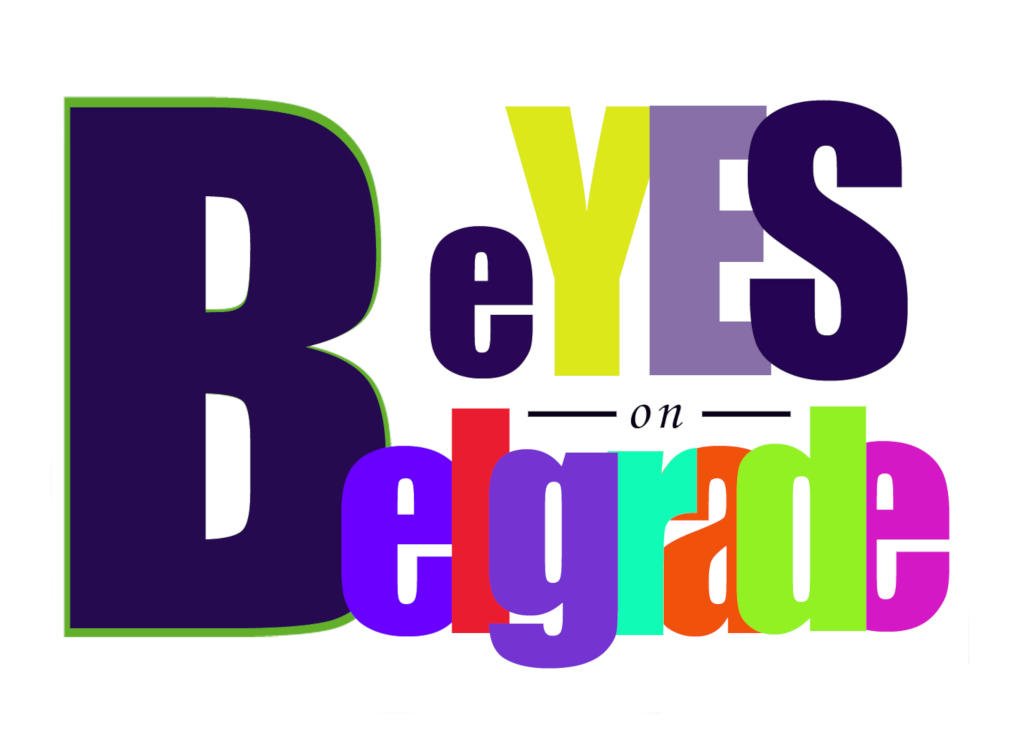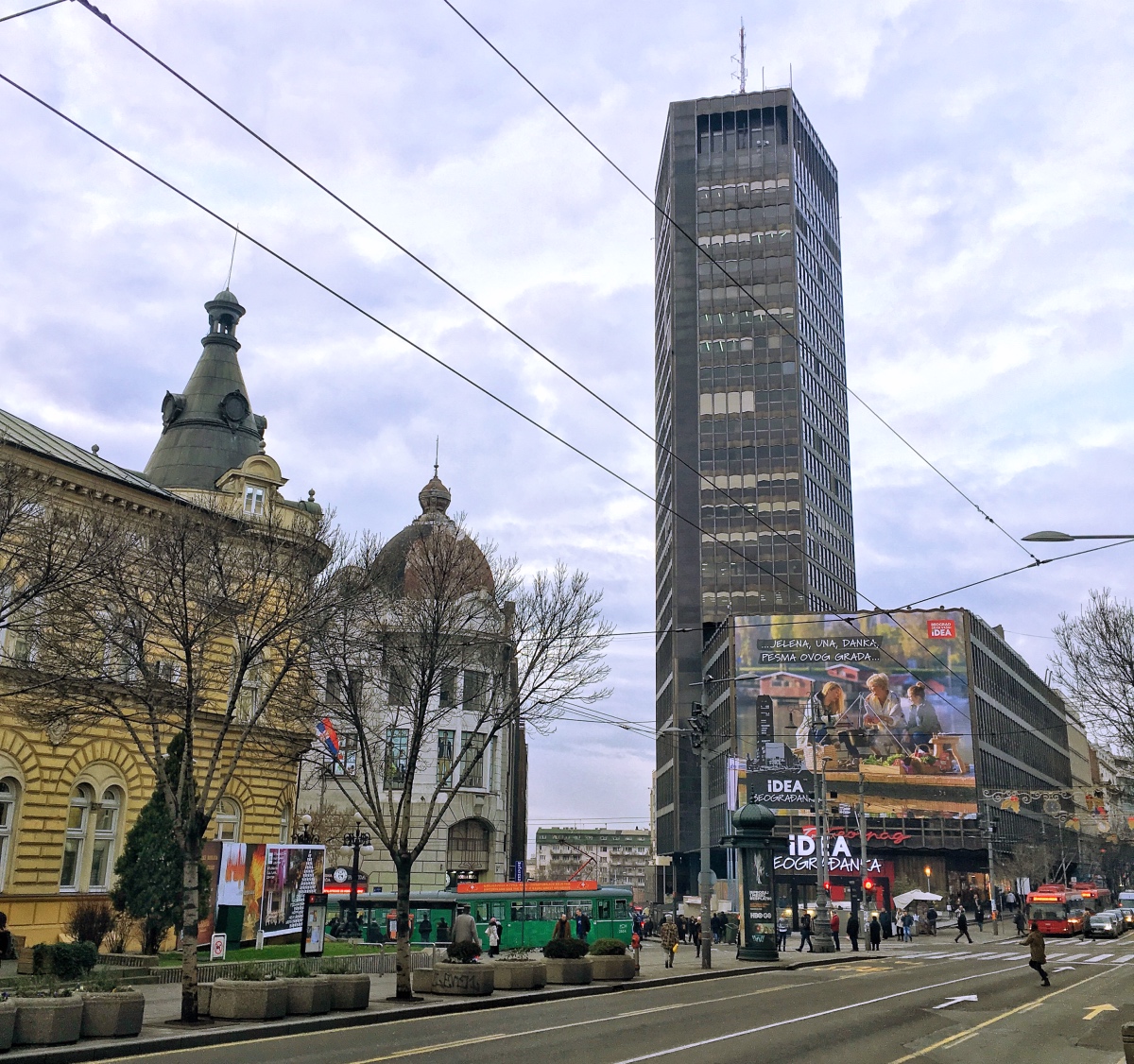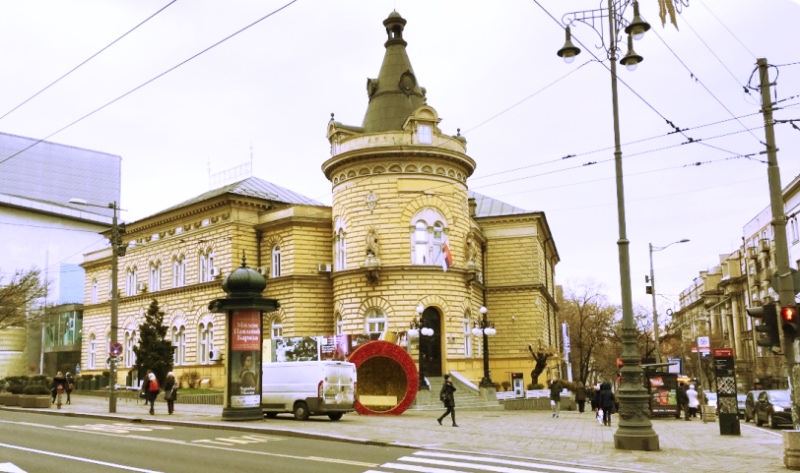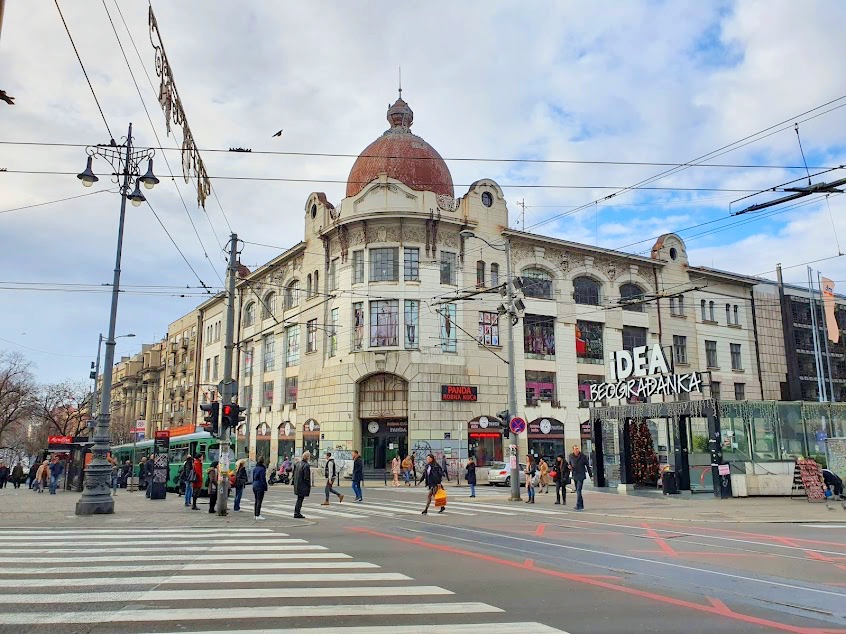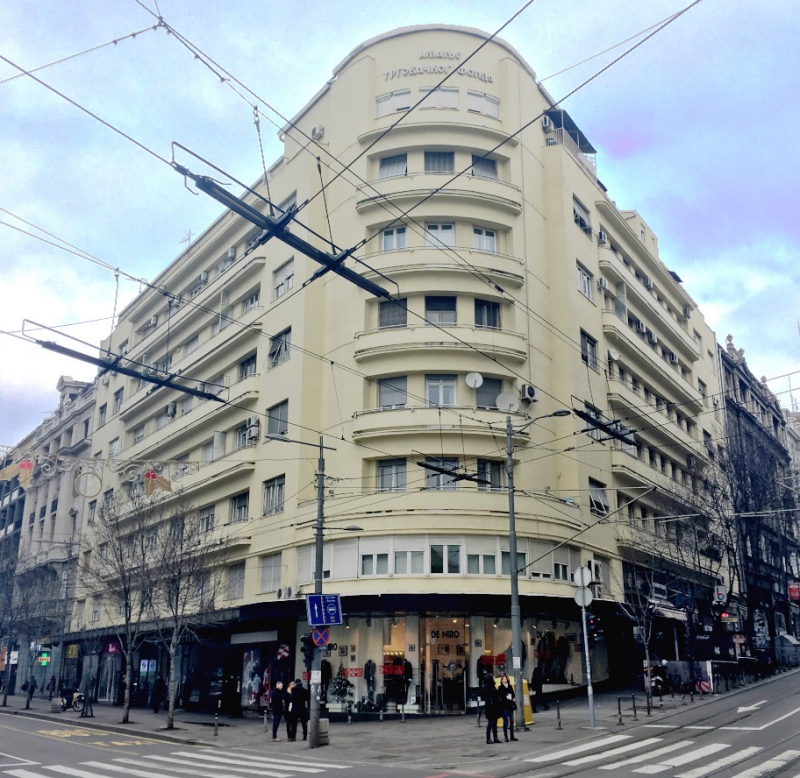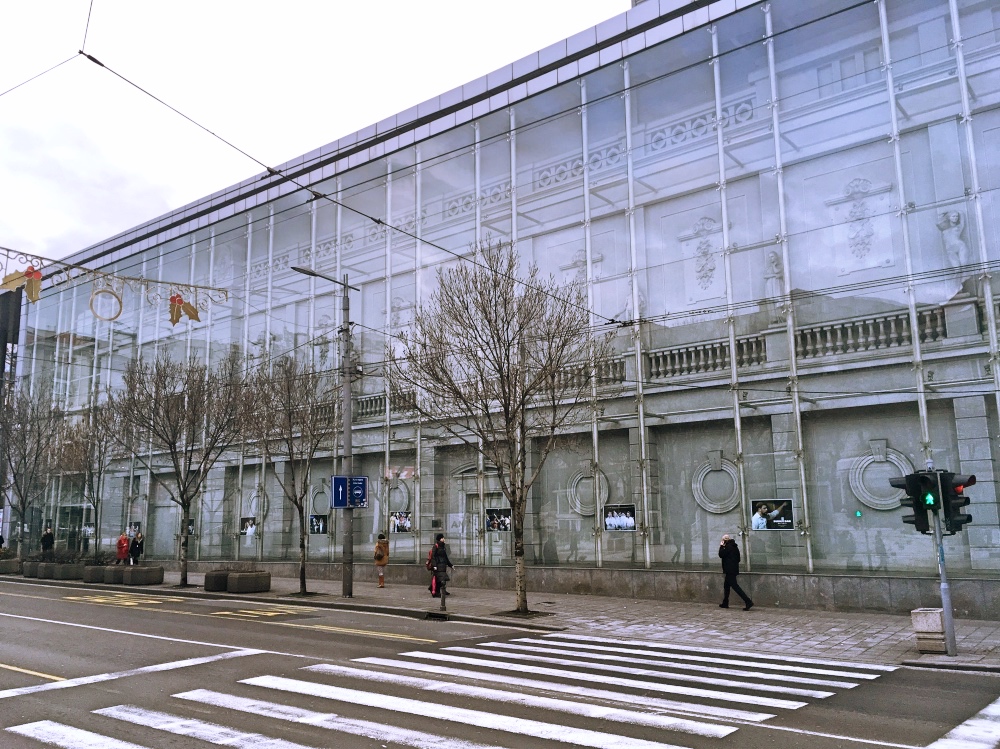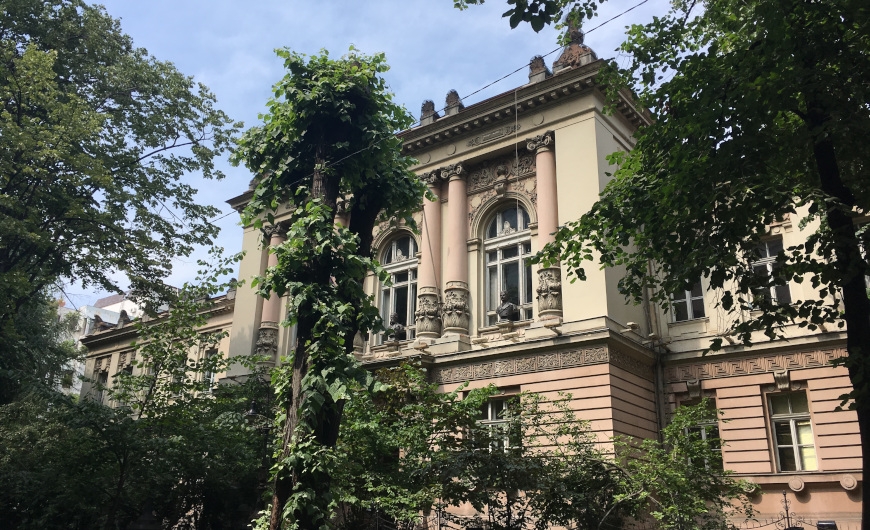Cvetni Trg (eng. "Flower Square") started as a small park in the late 19th century, which grew into an open market. With creation of the Society for Vračar Embellishment, nice looking buildings start to grew marking its borders.
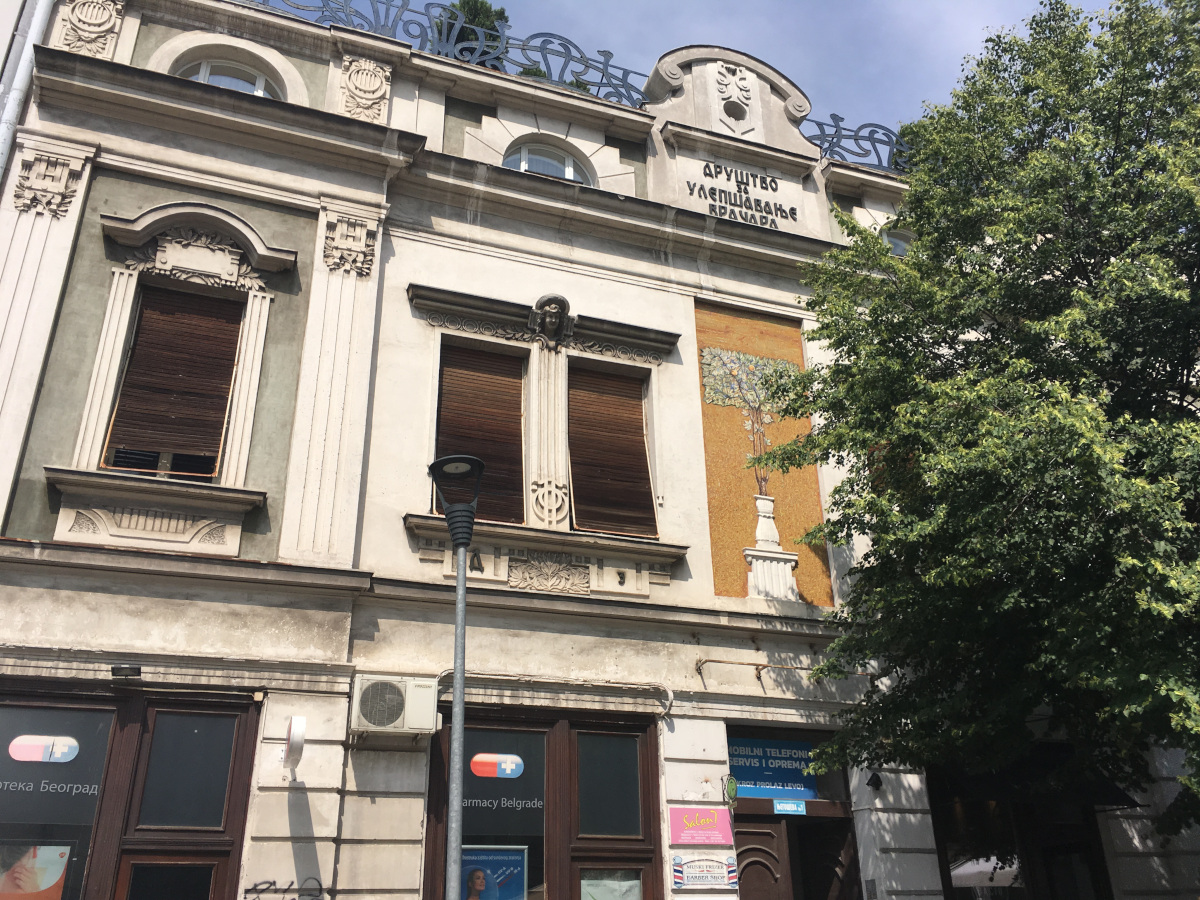
In the early 19th century, this place was still at the outskirts of Belgrade (imagine, now it is considered to be in the center of it), and it was covered by the wood of oak trees. The process of urbanization started mid-19th century.
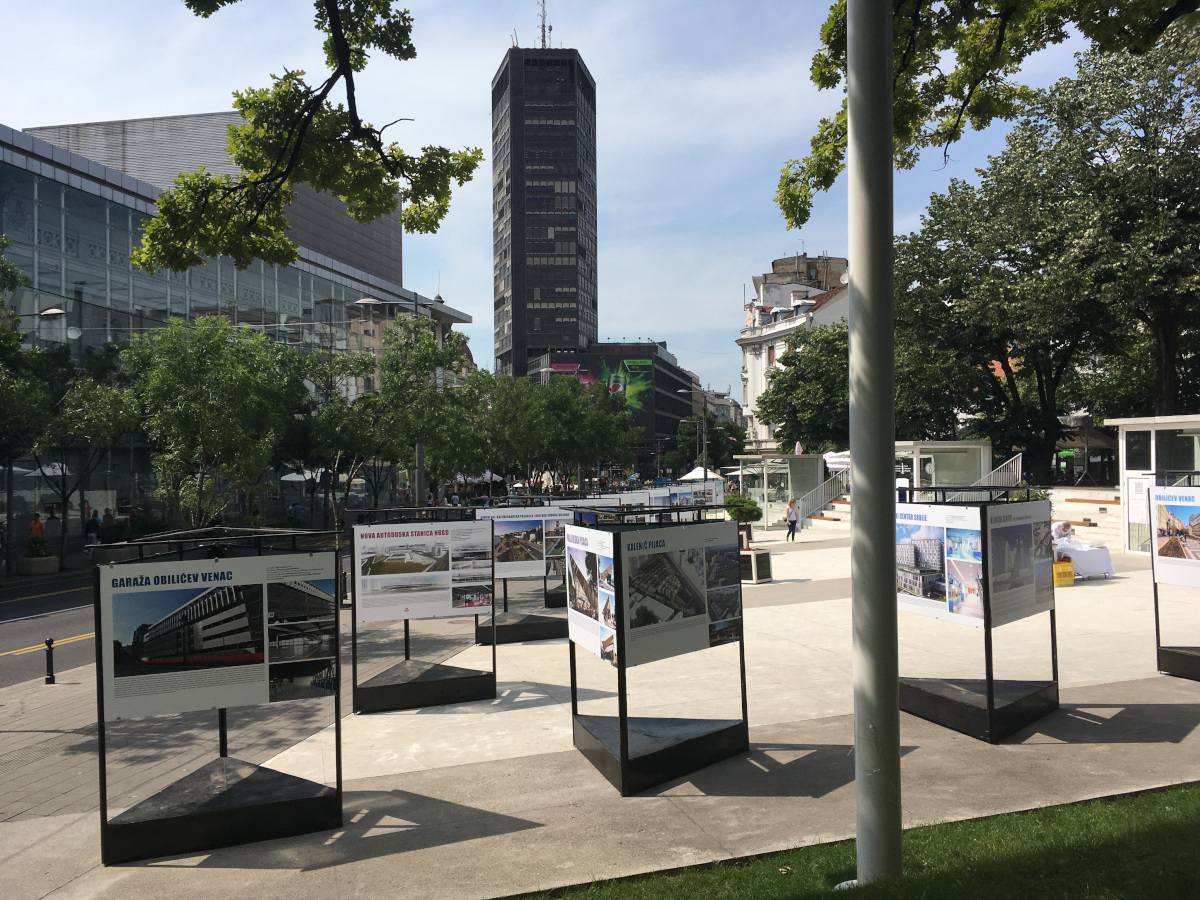
One of the most representative buildings at Flower square is the House of Nikolić Brothers, from 1914, built in Serbo-Byzantine style with some elements of Secession.
This was the place with lots of flower shops, and thus the name, so if someone needed to buy flowers for his or her loved ones, this would have been the most probable place of acquisition.
In 1958, the first big supermarket was opened in Belgrade at Flower square, and it remained there until present times, of course, with different ownership.
The place got reconstructed several times, but small flower shops remained there. Until the last reconstruction. Now the shops ceased to exist, and the place is envisioned as an exhibition plateau. There is a Belgrade Info office at the square, as well as the outpost of an art gallery.
At the large steps nowadays is a monument of the famous Serbian writer Borislav Pekić. This is the place with lots of coffee shops, and it is especially beautiful in springtime and summer. At the Flower square you can see a remarkable two-centuries-old oak tree, located in front of the supermarket, the only one that survived from the old woodland.

The Yugoslav Drama Theater is located in the building that was originally constructed in 1860 for the purpose of holding the stable of army's equestrian regiment, but since then was renovated and rebuilt several times, mainly due to fire. Now the facade is covered with glass panels. This was, actually, the first building errected at Flower square.
Cvetni Trg (Flower Square) is overlooking a giant Belgrade Palace skyscraper, and two extraordinary buildings originally built for military purposes - Officers' Club building (now Students' Cultural Center) and Officers' Cooperative Building (now department store), and it is located both in Njegoševa street and in Kralja Milana street, close to Slavija square.
House of Nikolić Brothers
This wonderful building from 1914 is located on the Flower square (ser. "Cvetni Trg") and it represents one of the most interesting applications of the Serbo-Byzantine style of architecture in Belgrade.
The elements of Secession are visible on the facade, which makes the whole structure even more attractive. However, one can truly appreciate its beauty in fall and winter, as there are large threes right in front which make quite an obstruction when the leaves flourish.
Belgrade Palace skyscraper
Belgrade Palace (aka in srb. "Beogradjanka" which literally means "Belgrade lady") is the first and the only modern skyscraper in the old town, and it fits perfectly into the classical surroundings. It was built back in 1974.
It is 101 meters tall with 24 floors. It is an office building, with super-market in the basement, a large department store in the lower parts, offices on the upper floors, and the "Studio B", Belgrade city radio and tv broadcasting company, on top. It is one of the main symbols and landmarks of Belgrade.
Officers' Club Building
The Officers' Club building is nowadays widely known as the "SKC", abbreviation for "Students' Cultural Center" to which was converted some time after WWII. Now it is used for concerts and exhibitions. There is a big book shop at the entrance.
This remarkable building was constructed in the spirit of Romanticism back in 1895. The first couple of years of the 20th century, colonel Dragutin Dimitrijević, called "Apis", was meeting his fellow colleagues from "Crna Ruka" (eng. "Black Hand") secret military society in the bar of the Officers' Club. Apparently, from this place they left, on the evening of May, the 28th, 1903, and headed towards the royal court, snatched the royal couple, King Alexander Obrenović and his wife, Draga Mašin, and threw them out the window, in an event that would become famous in Serbian history by the name of "The May Coup". This was the end of Obrenović royal dynasty, and the beginning of Karadjordjević rule.
Officers' Cooperative Building
The Officers' Cooperative building forms a beautiful sight with the building of the Officers' Club, across the street, making sort of a gateway to the lower part of Resavska street. It was intended to house a department store, and it preserved its commercial character until present times, when it is used for a Chinese outlet.
It was built in 1908, and it represents a fine example of Art Nouveau in Belgrade's architecture, with visible elements of Secession on the facade ornaments.
Building of the Old Trading Fund
This remarkable building was constructed right before the beginning of WWII, in 1939, in the fashion of pre-WWII modernism, with shallow curved balconies. It lies on the corner of Kralja Milana street and Resavska street and was originally intended to be the head office of the "Hipotekarna Banka" Trading Fund (eng. "Mortgage Bank Trading Fund").
Many well-known people lived in this building. From one of its appartments, Ambassador Rolović left to Sweden, where he was assassinated in 1971 by Croatian nationalists, which was one of the biggest political cases in the former socialist Yugoslavia. Famous Serbian writer, Branko Ćopić, and poet, Desanka Maksimović, also resided here.
Yugoslav Drama Theater
The building of Yugoslav Drama Theater is located in Kralja Milana street, at the outskirts of "Manjež" park and across the "Flower Square" (ser. "Cvetni Trg").
Originally, the building that previously stood on that spot was a stable for the Serbian Royal Cavalry that burned to the ground in 1927 (built around 1860). Then, in 1931 the new building was constructed to host the National Theater, because its home was severely damaged in the Great War (WWI). In 1947, after WWII, the Yugoslav Drama Theater was founded and the building was reconstructed to serve the purpose. In 1997 it burned to the ground once again, and in 2003 it was reopened. The new building has glass panels covering the facade which adds to its modern appearance nowadays.
Park "Manjež"
One of Belgrade's oldest parks is located between Nemanjina street, Resavska street, and Kralja Milana street, in the very center of the city. Its name originates from the French word "manège" meaning "equestrian school", as it was used by the Royal Cavalry.
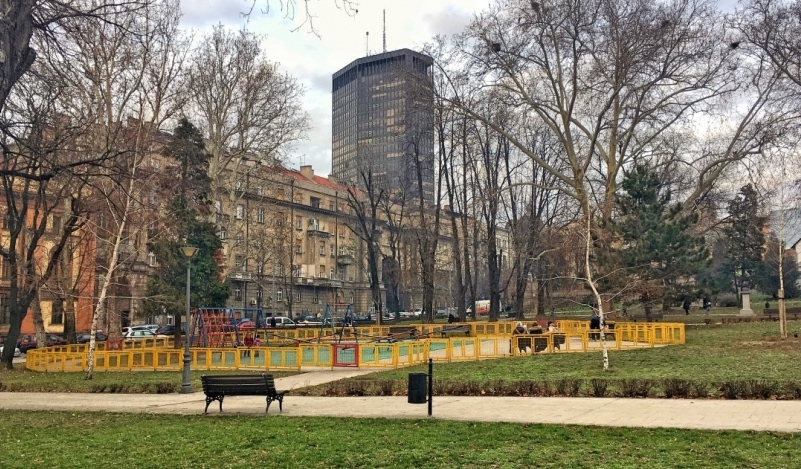
This space is converted into a park in 1933. It has rectangular shape, and on the upper side (Kralja Milana street) it is bounded by the magnificent building of the Yugoslav Drama Theater and Cvetni Trg (eng. "Flower Square"). In the park itself, there is a playground for children.
Many statues and artistic sculptures are one of the most notable features of this park. You can also see a high Belgrade Palace rising above, as well as beautiful building of the Barracks of the 7th Army Regiment.
Building of the 3rd Belgrade Gymnasium
The home of the 3d Belgrade's Gymnasium is one the most beautiful schools in the city, in architectural sense. It was built in 1906 in the spirit of Academism with accented classical elements. It is located in the center, at the beginning of Njegoševa street, at the outskirts of Flower square.
The building is surrounded by numerous coffee shops and bars, and it is one of the popular urban areas for leisure and having a drink with friends.
 English (United Kingdom)
English (United Kingdom)  Srpski latinica (Srbija)
Srpski latinica (Srbija) 